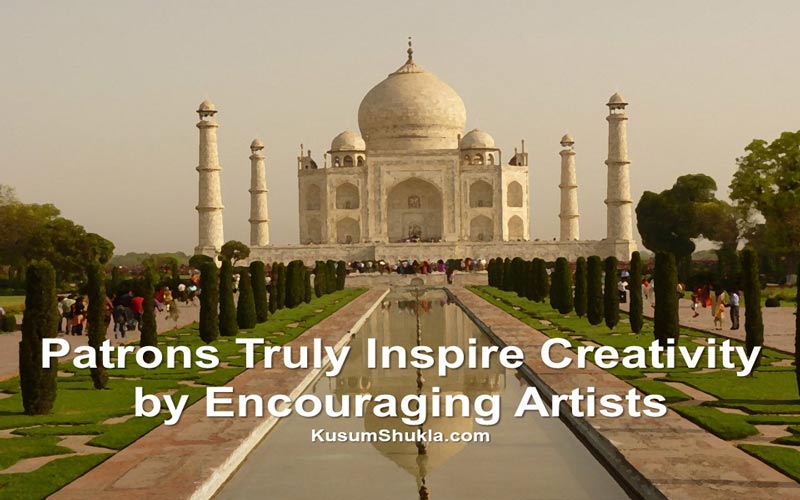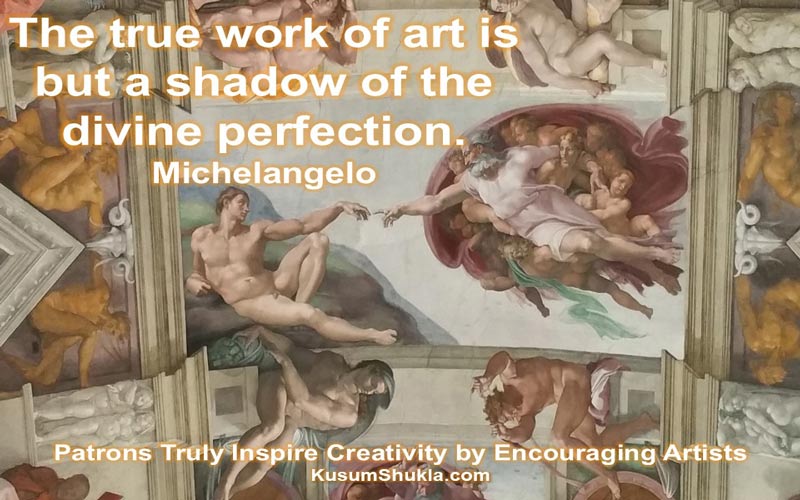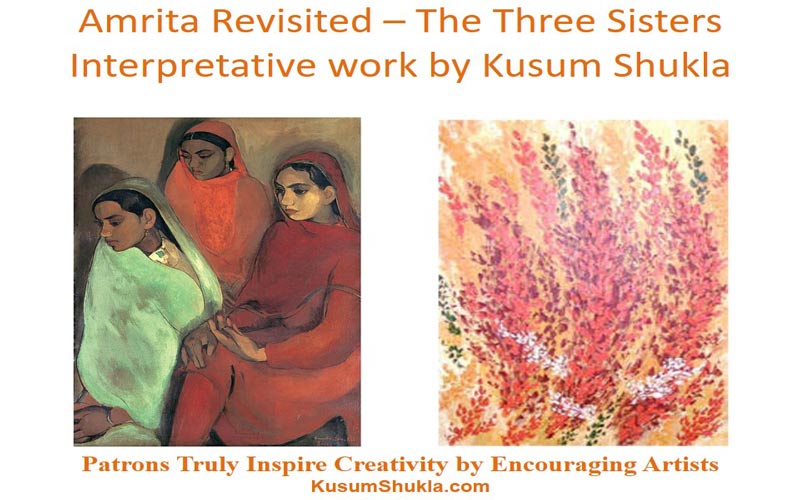
Patronage of the arts, including performing arts is not a new concept and is older than art galleries for promoting the art market.
Right from ancient time, patronage of the arts has been important in art history. When people think of patrons, they normally think about medieval and Renaissance Europe but this was a global practice.
One finds patrons in feudal Japan and other Asian countries where royalty and aristocracy encouraged art and the basics of patronage were the same.
Patrons drew contracts with artists to commission art or sculpture from them. The patron paid for the artist’s time, work and materials.
It wasn’t always a one-off patronage and in some cases the rich patron or institution provided ongoing financial support and backing.
It was a mutually beneficial relationship. The patron acquired high quality art works and the artist was allowed to focus on the creative process without worrying about earning a living or keeping starvation away from their door.
According to Wikipedia, Patronage is the support, encouragement, privilege, or financial aid that an organization or individual bestows on another.
In the History of Art, arts patronage refers to the support that kings, popes, and the wealthy have provided to artists such as musicians, painters, and sculptors.
While sponsorship of artists and the commissioning of artwork is the best-known aspect of the patronage system, other disciplines have also benefited from patronage.
Think of Michelangelo and your mind immediately visualizes the Renaissance frescoes in Sistine Chapel, the scene of The Creation of Adam and sculptures which wouldn’t have been possible without the largesse of Lorenzo de’ Medici who funded the careers of internationally renowned artists such as Leonardo da Vinci, Sandro Botticelli and Michelangelo.

Closer to home and equally famous worldwide is the Taj Mahal, an immense mausoleum of white marble built in Agra between 1631 and 1648 by the order of the Mughal Emperor Shah Jahan in memory of his favourite wife Mumtaz Mahal .
The Taj Mahal is the jewel of Muslim art in India and considered to be the greatest architectural achievement in the whole range of Indo-Islamic architecture and imagine, it wouldn’t have been possible without the backing of a patron!
No wonder the reign of Shah Jahan, the fifth emperor, between 1628–58 is called the golden age of Mughal architecture!
Even before Shah Jahan, his grandfather Akbar was a great patron of painting and his sponsorship enabled painters to achieve great refinement.
“Although he is said to have been illiterate, Akbar assembled a royal atelier, first at Fatehpur Sikri, then at Lahore, from which he commissioned numerous illustrated manuscripts that incorporate Persian, Indian, and even European elements.
In fact, the artists who worked for Akbar, the first great Mughal patron of the arts of the book, included Persians as well as Indian Muslims and Hindus. This collaborative process helped to foster the development of a specifically Mughal style, which was initiated under Akbar. It is demonstrated by pages from diverse late-sixteenth-century manuscripts. This style of painting was further developed and refined during the reigns of Jahangir and Shah Jahan during the seventeenth century.”
Citation: Department of Islamic Art. “The Art of the Mughals before 1600.” In Heilbrunn Timeline of Art History. New York: The Metropolitan Museum of Art, 2000–. http://www.metmuseum.org/toah/hd/mugh/hd_mugh.htm (October 2002)
Patrons in Modern Times
Of course there are patrons in modern times too. Corporates, hotels and even governments often commission art and art works for specific purposes or occasions.
Just before the Gulf War I was in talks to create art works for a Women and Children’s hospital rooms in Doha. It was the first time I saw the process of what commissioning art works was.
The patron was a Sheikh who wanted uniformity of art work in all the hospital rooms. He had hired an international interior designer to sources the paintings. It was an opportunity to create art that would brighten up the rooms. Everything had been discussed including the works being commissioned and the price.
Sadly, before the contract could be signed and my patronage commence, the Gulf War happened and the project never took off.
But life gives us a second chance and I got one as part of a group commissioning.
In 2004, The Indian Council of Cultural Relations commissioned art works to celebrate International Women’s Day. One part of the exhibition, Amrita Revisited had 53 painting on Amrita Shergill’s legendary canvas The Three Sisters.
Selected artists including myself were invited to create their expressions based on her famous painting Three Sisters. These artworks formed part of their collection Celebrating Women and this collection has travelled the world.

(This type of interpretive work is usually done to celebrate the great masters such as Van Gogh, Monnet and Picasso.)
Unless the artist has a gallery promoting them to their buyers, finding patrons who will buy all of the artist’s works is challenging. For one, the patron must love your work and have the money to invest in your artworks!
It’s one of the tragedies of Van Gogh’s life that he only sold one painting during his lifetime. He didn’t have a true patron although his brother Theo could be considered his patron.
But you don’t have to be royalty or a corporate or an institution with funds to buy one artist’s work. You can still build a collection of art works that resonate with you.
In fact there are benefits of becoming a patron of arts and not just painting.
7 Benefits of Being a Patron of the Arts
The arts seem to be slowing dying off in pandemic times even though galleries and organizations are moving art of all forms and mediums online. The one question nobody wants to answer is whether sales are taking place.
But the future looks optimistic with more online portals for artworks and the reopening of galleries, museums and other centers for art.
Now is a good time to consider getting involved with the arts.
t used to be far more common for the average person to attend an art gallery, orchestra performance, or the ballet. This is unfortunate, because the arts can add a tremendous amount of enrichment to our lives.
Consider the great benefits you’ll experience if you get involved with the arts:
You’ll be exposed to new people. Artists and those that support them are often really interesting. You’ll be surprised at the wide variety of people you’ll come across. Some of these new folks just might become friends, bringing exciting variety into your life.
There’s a saying that you’ll be the same in 10 years from now, aside from the books that you read and the people you meet. Meet some new people!
You’ll have new thoughts and perspectives. The art and people that you’re exposed to will change your mind about many things. You’ll consider things you’ve never even thought about before.
You’ll enrich your home. A home with artwork from a local artist has a very different feel to it. You can even purchase high quality prints from recognized art portals if the artist is not in your country or you cannot afford to purchase the original.
To get an idea of what I’m saying, please visit my page on Fine Art America.
You can really explore and demonstrate your preferences when you’re exposed to different styles and can choose what you really prefer.
You’ll become more interesting. The more multi-layered you are, the more interesting you are to others. Plus, if you think about it, the most interesting people you know probably either travel a lot or spend time involved with the arts.
When others show more interest in you, you’ll become more confident and boost your self-esteem. It’s one of the few times you can make your life better while enjoying the process!
You’ll be more involved in your community. Local art galleries, theaters, musical productions, and other art-related activities are vital parts of any community. It’s another way you can get involved with others in your local area.
There is a great sense of camaraderie that exists within each artistic sphere.
There are frequent activities that always seem to be looking for more volunteers. You can also support local artists and productions with financial help. A little encouragement can go a long way.
You’ll make new connections. The more people you know the better. Many powerful people are interested in artistic endeavors.
You might meet the mayor or a local business person that could ultimately become a good friend.
As they say, “It’s all about who you know.” You never know who you’re going to meet when you become a patron of the arts.
Your children will benefit. Most kids love some aspect of the arts. The average 10-year old isn’t interested in the opera, but he might love an art festival at the park.
Ask your child to point out an artistic creation they like and inquire as to why they like it. You might learn something.
The arts can enrich your life, if you’ll take the opportunity to expose yourself to the world of art. The people you’ll meet and the things you’ll learn about yourself through the arts will change your life.
So go online or grab the local paper and see what’s happening in your community. Then plan who you will gift your patronage and support to for the week.
Want a jumpstart in your art patronage?
Use the code XLEGXD for a 15% discount between 30/07/2021 and 28/10/2021 at Kusum Shukla’s Fine Art America Shop.

Note: The photograph of Amrita Shergill’s Three Girls or Three Sisters as it is popularly known has been taken from Wikimedia Commons and is in the Public Domain.

Thanks for a most informative post! It’s very interesting to note the different forms and levels modern patronage can take, and the benefits of becoming a modern arts patron. I particularly liked your interpretation of Three Sisters, using the same 3 colours as the 3 girls and same background colour as the original painting . Their innocence is also captured well. Looking forward to your next post!